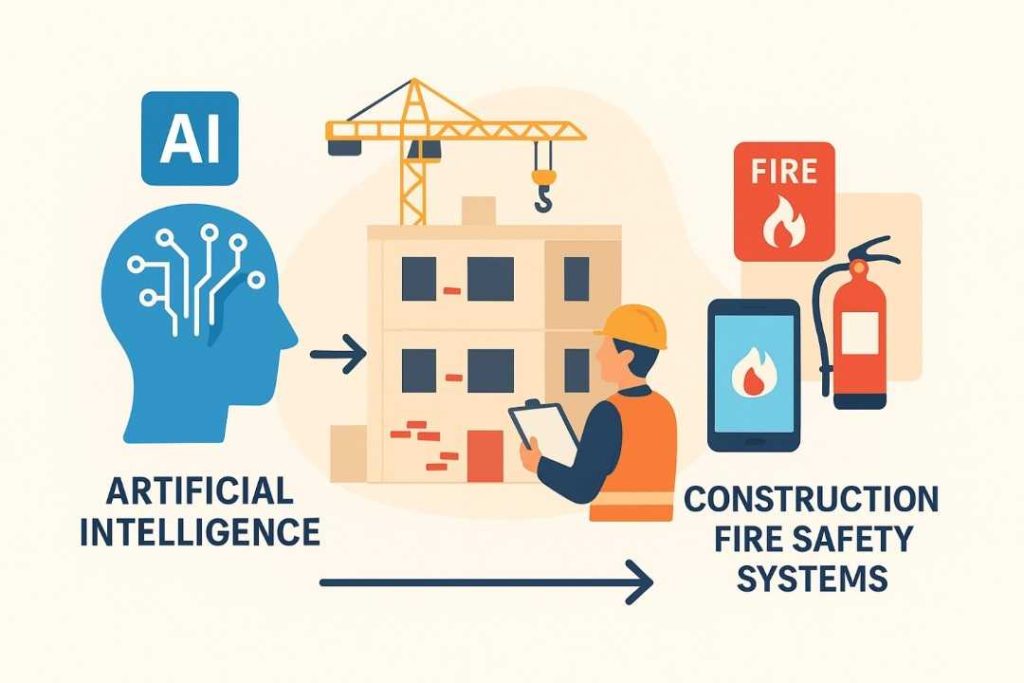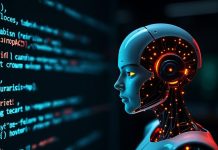In an industry where worker welfare, structural integrity, and public safety are top priorities, fire safety remains a central concern. As the construction sector rapidly embraces digital transformation, the integration of AI into fire safety is ushering in a new era of intelligent prevention, early detection, and efficient response. Artificial intelligence (AI) tools are now helping fire safety professionals and public safety agencies mitigate risks and enhance safety across complex construction environments.
Construction Site Safety Software platforms are already streamlining compliance and inspection management. When paired with AI-driven systems, they offer an even greater opportunity to prevent fires and protect built environment assets. According to research, there were 5,190 fatal work injuries in the U.S. in 2021, underscoring the urgent need for smarter, AI-powered safety interventions across industrial and construction sectors.
Table of contents
The Role of AI in Fire Safety

Artificial intelligence in fire protection leverages machine learning, computer vision, and innovative and digital technologies to improve fire safety outcomes. By analysing historical fire data and existing data from alarm systems, sensors, and building plans, AI systems can identify fire hazards before they escalate.
AI technology enables the detection of unusual heat patterns using thermal imaging cameras and heat sensors, distinguishing real fire threats from nuisance alarms. This level of situational awareness supports emergency services by improving decision-making and reducing false alarms that often delay response times.
The National Fire Protection Association (NFPA) has long emphasised the importance of continuous innovation in fire safety systems. AI makes a significant contribution by turning reactive systems into predictive tools that can identify potential fire hazards early in construction or operation.
How AI Enhances Fire Detection and Alarm Systems
Traditional smoke alarms and smoke detectors are reactive they respond after fire growth has started. AI-driven fire detection systems, on the other hand, can analyse video feeds and sensor inputs to detect signs of ignition or unusual heat patterns before smoke becomes visible.
Through computer vision and machine learning, AI software can learn from thousands of fire incidents, refining its ability to differentiate between regular activity and early indicators of combustion. For instance, an AI system monitoring a construction site might recognise subtle shifts in temperature or movement patterns that suggest overheating machinery, faulty wiring, or chemical reactions that precede a fire.
Improved alarm sensitivity via AI reduces false alarms and speeds responses to real fires. As AI tools continue to evolve, fire alarm systems are becoming capable of self-adjusting based on environmental factors such as humidity, dust levels, and changes in ventilation, all common in construction settings.
Predictive Maintenance and Risk Management

AI plays a critical role in predictive maintenance by analysing historical data to identify patterns that precede failures in fire safety systems or building assets. For example, if smoke detectors across multiple sites exhibit similar faults, AI can flag the issue before an incident occurs. This predictive approach reduces downtime, supports compliance with fire safety regulations, and prevents fires before they start.
Construction managers can integrate AI with fire protection services to ensure sprinklers, alarm panels, and extinguishers remain functional throughout every project phase. By using AI technology to monitor asset performance and detect potential hazards, organisations enhance their fire safety design and reduce the likelihood of costly fire incidents.
Risk management strategies in construction also benefit from AI’s analytical capabilities. By combining data from fire incidents, building data, and environmental sensors, AI-driven systems can assess fire risk levels and guide preventive measures that align with national and local fire safety standards
AI and Fire Safety in the Built Environment
The way built environment assets are designed and managed is changing. Innovative technologies allow construction teams to embed AI into building management systems, enabling real-time analysis of fire protection systems.
AI systems can simulate fire growth and severity across different building configurations, helping architects and engineers refine fire safety designs during the planning stage. Using building data and thermal imaging, AI tools can map potential fire risks and suggest improvements before construction even begins.
In existing structures, AI can provide valuable insights into compliance with fire safety regulations by continuously monitoring conditions that may increase fire risk, such as blocked evacuation routes or malfunctioning alarm systems.
This proactive monitoring supports the fire safety community by improving communication between contractors, safety officers, and emergency services, ensuring that human control remains central while AI performs tasks that enhance overall protection.
Smart Firefighting and Emergency Response
AI in firefighting operations is also changing how emergency services manage real fire events. By combining edge computing, heat sensors, and real-time data, AI technology enables firefighters to detect anomalous heat patterns, predict fire locations, and estimate fire growth more accurately.
AI-powered situational awareness platforms can analyse drone data or CCTV footage to determine the best evacuation routes and firefighting strategy in dynamic conditions. This not only helps firefighters extinguish fires faster but also minimizes risk to human life.
Innovative firefighting technologies also use predictive models to estimate fire severity and spread, enabling more efficient resource deployment. Fire safety professionals can use AI-driven decision-making tools to coordinate responses between construction site teams and public safety agencies, improving the speed and accuracy of operations.
Integrating AI with Construction Fire Safety Systems

AI’s ability to process vast amounts of data from the built environment makes it an ideal partner for modern fire safety systems. Construction projects generate extensive data from alarm systems, cameras, and compliance reports, which can feed into AI systems to provide actionable insights.
For instance, AI can automatically identify fire hazards in site footage, assess whether evacuation plans are up to date, or flag issues that increase fire risk, such as flammable material storage or blocked exits. AI-driven systems can then recommend preventive measures that reduce risks before workers or assets are exposed to danger.
When combined with smart platforms like Construction Site Safety Software, site managers gain a complete, data-driven view of safety performance. This integration enables early detection, predictive maintenance, and improved compliance tracking, all of which contribute to safer construction environments.
The Future of AI in Fire Safety
As the construction industry continues to embrace digital transformation, the application of AI in fire safety will expand further. From improving alarm sensitivity to predicting the best evacuation routes, AI is significantly improving how potential fire risks are managed.
The collaboration between human intelligence and artificial intelligence ensures that, while machines perform tasks such as data analysis and anomaly detection, human oversight remains critical for final decision-making and response. This partnership between human control and smart technologies represents the next stage in construction fire safety, one focused on prevention, precision, and protection.
As AI tools continue to evolve, the fire safety community can expect to see more advanced applications that use historical fire data and real-time monitoring to anticipate and prevent incidents. With AI technology supporting more innovative, safer construction practices, the industry is on the path to a future where fires are detected earlier, risks are managed, and every building is designed with enhanced safety in mind.
Conclusion
The use of artificial intelligence AI in fire protection is reshaping how the construction industry approaches safety. By combining predictive analytics, computer vision, and data-driven decision making, AI systems are helping to prevent fires, reduce false alarms, and improve emergency response efficiency.
As the capabilities of AI software and fire safety systems continue to develop, construction professionals who adopt these smart technologies today will be better equipped to protect their people, assets, and future projects.











